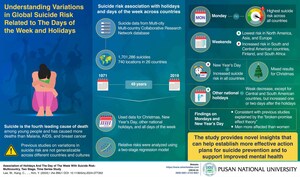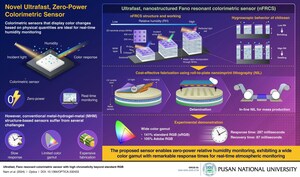Pusan National University Researcher Unpacks the Impact of Tariffs on Market Competition, Global Welfare, and Consumers' Wallets
Inefficient exporters tended to prefer uniform tariffs, while efficient exporters preferred a discriminatory tariff regime for any degree of product differentiation
窗体底端
BUSAN, South Korea, Oct. 18, 2023 /PRNewswire/ -- There's a well-known phrase attributed to Benjamin Franklin that there is nothing certain in life except death and taxes. Most governments impose some sort of tax on citizens and businesses to bring in revenue and foster their country's economic development. Tariffs are a type of tax that are imposed on firms importing goods and services from overseas. This is typically done to protect a country's domestic industry, but the costs are usually borne by the customers purchasing those products.
In the era of globalization, tariffs are often seen as a hindrance to free trade. The World Trade Organization (WTO) for instance has set limits on the monetary amount of tariff a country can apply on imported goods. However, trade agreements with particular countries that are granted Most-Favored Nation (MFN) status, can lead to a discriminatory tariff regime.
In a new study published by The Journal of International Trade & Economic Development on 26th June 2023, Prof. Kangsik Choi from Pusan National University explored how uniform and discriminatory tariffs affected market competition under asymmetrically-increasing marginal costs. Previous studies that investigated the efficiency of uniform and discriminatory tariffs did so by assuming constant marginal costs. The assumption of asymmetrical marginal costs for this experiment was invoked because exporters' marginal costs no longer remain constant but increase with outputs.
Prof. Choi devised an economic model to investigate this premise. He found that discriminatory tariffs led to Cournot competition, where rival firms compete based on the quantity of the products they are producing, with the goods themselves being identical. Meanwhile, uniform tariffs resulted in various modes of competition, including Cournot, Bertrand, where firms compete over the price of the identical goods. Additionally, asymmetric competitions emerged, where firms were competitors in some markets but not in others.
Furthermore, Prof. Choi discovered that contrary to previous studies, his research showed that inefficient exporters tended to prefer uniform tariffs, while efficient exporters preferred a discriminatory tariff regime for any degree of product differentiation. This also had consequences for global welfare and consumers' own savings.
For global export and import, tariff nondiscrimination eliminates inefficiencies that may arise when different tariff rates are applied on the same goods imported from different trading partners. However, the issue of a preferred tariff regime for individual trading countries is not as simple as that for global welfare. "My results showed that global welfare increases with the adoption of uniform tariffs under the asymmetric competition mode. But, when the degree of product differentiation is either high or low, the importing country benefits from a discriminatory tariff regime, as does global welfare," Prof. Choi remarked.
These results hint at the possibility that tariff regimes can be regulated to benefit exporters' profits, consumers' wallets, and social and global welfare by understanding the impact of increasing marginal costs. As Prof. Choi suggests, "In contrast to the WTO's rule, importing countries may prefer discriminatory tariff to uniform tariff because of the cost functions of firms".
Reference
Title of original paper: Uniform versus discriminatory tariffs in increasing marginal costs and endogenous competition
Journal: The Journal of International Trade & Economic Development
DOI: https://doi.org/10.1080/09638199.2023.2226260
About the Institute
Website: https://www.pusan.ac.kr/eng/Main.do
Media Contact:
Jae-Eun Lee
82 51 510 7928
SOURCE Pusan National University

WANT YOUR COMPANY'S NEWS FEATURED ON PRNEWSWIRE.COM?
Newsrooms &
Influencers
Digital Media
Outlets
Journalists
Opted In






Share this article